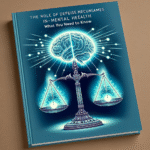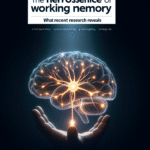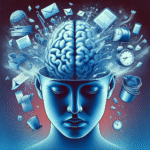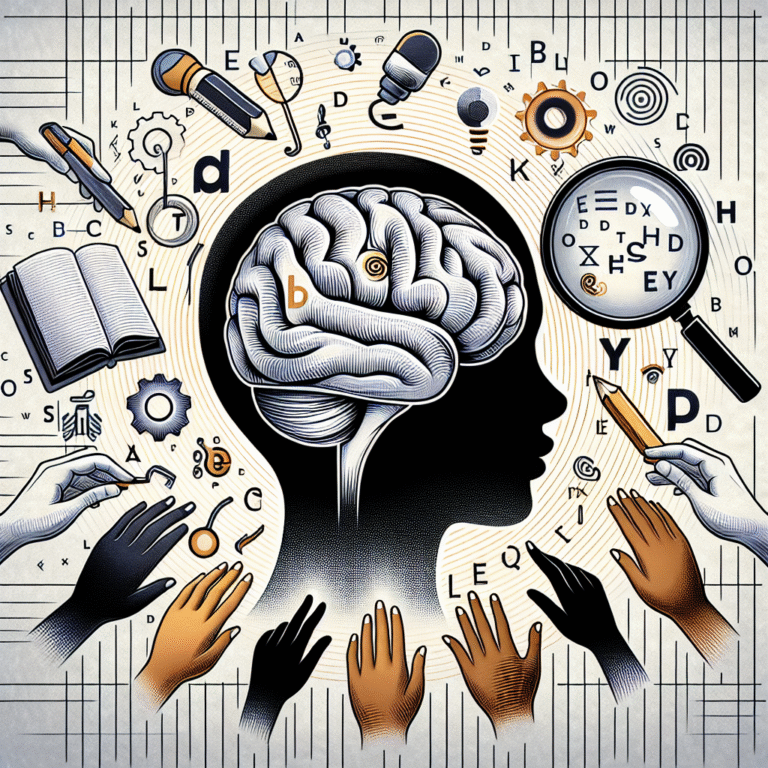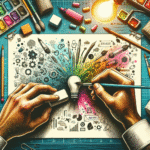
Empower Your Child: DIY Strategies for Identifying Learning Disabilities
In today’s fast-paced world, understanding our children’s unique learning needs is essential for fostering their growth and success. Identifying learning disabilities can be daunting for parents, yet empowering your child through proactive measures can make a significant difference. This comprehensive guide, “Empower Your Child: DIY Strategies for Identifying Learning Disabilities,” will unveil actionable strategies and insights that will not only help you identify potential learning disabilities but also equip you with the tools to support your child effectively. As we delve deeper, you’ll discover that recognizing these challenges early can profoundly change your child’s academic and emotional well-being.
Understanding Learning Disabilities
What Are Learning Disabilities?
Learning disabilities are conditions that affect the way individuals process information. They can impact reading, writing, mathematics, and speaking skills. These disabilities do not indicate a person’s intelligence; they can impede one’s ability to communicate and learn efficiently.
Common types of learning disabilities include:
-
- Dyslexia: affects reading and language processing.
-
- Dyscalculia: impacts mathematical skills and understanding.
-
- Dysgraphia: Impairs handwriting and fine motor skills.
-
- Auditory Processing Disorder: affects listening and understanding spoken language.
Why Early Identification Matters
Identifying learning disabilities early can lead to tailored interventions significantly enhancing your child’s academic performance. Early help improves learning outcomes and boosts self-esteem, enabling your child to thrive both in and out of the classroom. Empowering your child with the right strategies will pave the way for lifelong learning skills and resilience.
DIY Strategies for Identification
1. Monitor Milestones
Tracking developmental milestones is crucial in the early years. Here’s a table that outlines key milestones your child should hit in their early childhood:
| Age Range | Developmental Milestones |
|---|---|
| 0-12 months | Responds to sounds, recognises faces. |
| 1-2 years | Uses simple words and follows basic instructions. |
| 3-4 years | Can count to three, understands the idea of “same/different.” |
| 5-6 years | Recognises some letters, can retell a story. |
If your child is consistently behind on these milestones, it may be worth further investigation.
2. Observe Learning Patterns
Take time to observe how your child approaches learning tasks. This is particularly useful for long-tail variations of our focus keyword: “DIY strategies for identifying learning disabilities.” Look for the following signs:
-
- Struggles with reading aloud: May take longer to decode words or pronounce them incorrectly.
-
- Difficulty with simple math concepts: finds it hard to grasp basic addition or subtraction.
-
- Problems with writing: avoids writing tasks or has messy handwriting despite repeated practice.
3. Create a Learning Diary
Keeping a learning diary can help you document your child’s progress and difficulties over time. Make it a habit to note down struggles or successes in various tasks. This can reveal patterns and areas that need more attention. Utilise this diary to share specific examples with teachers during parent meetings.
4. Engage in Play-Based Assessments
Play is a powerful learning tool. Use activities such as puzzles, memory games, or building blocks to assess cognitive skills in a relaxed environment.
-
- Puzzles: Highlight problem-solving skills.
-
- Memory games: Test short-term memory and focus.
5. Use Standardized Tools
Several standardised tools, such as checklists or questionnaires, can serve as preliminary assessments. Here’s an example of a simple checklist:
| Skill Area | Yes | No | Comments |
|---|---|---|---|
| Can my child read aloud comfortably? | |||
| Does my child follow multi-step directions? | |||
| Can my child recall stories? | |||
| Is my child able to solve basic arithmetic problems? |
This tool can provide further clarity regarding specific areas that may warrant professional assessment.
6. Collaborate with Educators
Working closely with your child’s teachers is essential. They can offer insights from a classroom perspective, which is invaluable. Schedule regular meetings to discuss your child’s progress, strengths, and weaknesses.
Case Study: Sarah’s Journey
Sarah was a bright 8-year-old who struggled with reading comprehension. Her mother, noting her difficulties, engaged Sarah in fun reading games at home while also collaborating with her teacher to monitor her progress. Over six months, Sarah’s confidence grew, and with continual support, professional testing confirmed a diagnosis of dyslexia, which led to tailored educational strategies. This real-world application illustrates the importance of early intervention and collaboration with educators in the DIY identification process.
Building Supportive Environments
Creating a Learning-Friendly Home
Fostering a nurturing and stimulating environment at home is vital for your child’s learning journey. Here are a few strategies to create a conducive learning space:
-
- Designate a Quiet Study Area: Minimise distractions by creating a designated area for homework and learning.
-
- Use multi-sensory learning techniques: Incorporate visual, auditory, and tactile methods to reinforce learning.
-
- Encourage Regular Reading: Read together daily, helping to build comprehension and language skills while making it a bonding experience.
Encouraging a Growth Mindset
Teach your child to embrace challenges and understand that effort leads to improvement. By empowering your child to adopt a growth mindset, they’re more likely to tackle difficult tasks head-on.
Case Study: James and the Power of Perseverance
James struggled with math early in his schooling. His parents encouraged him to view learning as a journey rather than a destination. They emphasised effort and progress, which eventually led James to build confidence and resilience. This example embodies the value of nurturing motivation and perseverance in children with learning challenges.
Frequently Asked Questions
Conclusion
Identifying learning disabilities in children is a critical process that empowers them to succeed academically and socially. Through proactive DIY strategies, you can create an environment of support and understanding, giving your child the tools they need to navigate their learning journey confidently. Remember, empowerment begins at home and through collaboration with educators and professionals. By employing the strategies outlined in this guide, you are actively participating in a meaningful journey that can transform challenges into opportunities for growth.
Embrace this journey as both a parent and a partner in your child’s learning path. Together, let’s break down barriers and pave the way for our children to unleash their full potential.
By implementing these research-backed approaches, you not only empower yourself but also empower your child, embodying the essence of “Empower Your Child: DIY Strategies for Identifying Learning Disabilities.” Take these steps forward; your child’s future is worth it!
